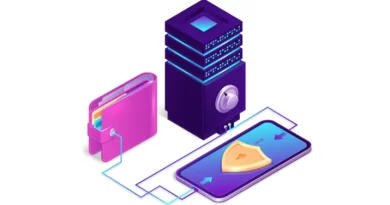Advancing Blockchain Interoperability for Tokenized Asset Settlement: Swift’s Collaborative Approach
Swift's experiments demonstrate the transformative potential of blockchain interoperability in asset settlement. Discover how seamless asset transfer across diverse blockchain networks is revolutionizing the industry. Stay informed with TechBizAI's latest insights.
As institutional investors increasingly explore investments in tokenized assets, they encounter a complex challenge due to the lack of interoperability among various blockchain networks. Each network operates with its own functionality and liquidity profile, resulting in significant overhead and friction when managing and trading these assets. To address this fragmentation and enable long-term scalability, Swift, in collaboration with major financial institutions and FMIs, is embarking on a series of experiments. This article delves into the need for blockchain interoperability, the potential benefits for investors and intermediaries, and how Swift aims to leverage existing infrastructure to drive change.
Investors and Intermediaries Face a Blockchain Challenge
While blockchain technology holds promise for generating efficiencies and reducing costs in capital markets, trading tokenized assets remains a niche activity in the regulated space. To facilitate market growth, financial institutions must have seamless interaction with multiple blockchain-based networks, just as they do with traditional asset trading. However, the highly fragmented ecosystem makes it infeasible for institutions to individually connect with each platform.
The Imperative for Interoperability
Recognizing the need for a model that enables access to different platforms globally, Swift is working toward developing blockchain interoperability. Swift’s Chief Innovation Officer, Tom Zschach, asserts that the emergence of a multitude of blockchain networks with unique capabilities and requirements necessitates an interoperability solution. Swift’s goal is to create a model that allows financial institutions to connect to various platforms using their existing infrastructure, minimizing costs and reducing the risk of technology obsolescence.
Leveraging Existing Infrastructure to Drive Change
Swift’s global cooperative nature positions it uniquely to address the challenge of blockchain interoperability. Rather than building new infrastructure from scratch, financial institutions seek to leverage their existing back and middle office systems to connect to blockchain ledgers securely and compliantly. This approach simplifies architecture and operations, minimizes investment costs, and ensures compatibility with evolving industry standards.
Swift’s Approach to Blockchain Interoperability: Following successful trials in 2022, Swift is advancing its experimentation with blockchain interoperability. The focus of the latest round of experiments is to showcase how Swift’s infrastructure can facilitate interoperability by enabling the transfer of tokenized value between existing systems and both public and private distributed ledger technology (DLT) platforms. Chainlink, a leading Web3 services platform, will provide connectivity across these platforms.
Key Experiments and Use Cases: Demonstrating Blockchain Interoperability
Swift’s ongoing experiments focus on showcasing the potential of blockchain interoperability by conducting various use cases. These use cases aim to address the challenges associated with transferring tokenized assets between different blockchain networks. By successfully demonstrating interoperability, Swift aims to unlock new possibilities and streamline asset settlement processes across multiple platforms. The key experiments and use cases conducted by Swift are as follows:
Transfer of tokenized assets between wallets on the same public blockchain network (Ethereum Sepolia testnet)
In this use case, Swift explores the seamless transfer of tokenized assets between wallets operating on the same public blockchain network. By leveraging Swift’s infrastructure and connectivity capabilities, the goal is to demonstrate the efficient movement of assets within a unified blockchain environment. This experiment helps establish the feasibility of interoperability within a single blockchain network.
Transfer of tokenized assets from a public blockchain (Ethereum) to a permissioned blockchain
The second use case focuses on enabling the transfer of tokenized assets from a public blockchain, such as Ethereum, to a permissioned blockchain. This experiment highlights the potential of bridging the gap between different types of blockchain networks. Swift aims to establish a secure and trusted transfer mechanism, enabling assets recorded on a public blockchain to seamlessly move to a permissioned blockchain environment.
Transfer of tokenized assets from Ethereum to another public blockchain
The third use case explores the transfer of tokenized assets from Ethereum, a widely used public blockchain network, to another public blockchain. By successfully facilitating interoperability between distinct blockchain networks, Swift aims to demonstrate the potential for efficient asset transfer and settlement across diverse platforms. This experiment highlights the broader vision of enabling seamless connectivity and transferability between various public blockchain networks.
Through these experiments, Swift aims to address the challenges associated with the lack of interoperability among blockchain networks. The goal is to provide financial institutions with the means to easily interact with multiple blockchain platforms, ensuring secure, trusted, and compliant asset transfer processes. Swift’s collaborative efforts with Chainlink, a leading Web3 services platform, further enhance the connectivity and interoperability capabilities across public and private blockchains.
By showcasing successful use cases that involve the transfer of tokenized assets within and between blockchain networks, Swift aims to drive industry-wide adoption of blockchain interoperability. These experiments shed light on the technical and business requirements of interacting with diverse blockchain networks, ultimately paving the way for a more efficient and scalable tokenized asset settlement ecosystem.
Non-Technological Considerations
In addition to technological aspects, Swift’s experiments also address non-technological considerations crucial for regulated institutions to interact with public blockchain networks and engage in cross-network transactions. These considerations encompass operational, compliance, and regulatory challenges, such as data confidentiality and privacy, liability, and recourse within public blockchain environments.
Swift’s efforts to explore blockchain interoperability for tokenized asset settlement signify a crucial step toward removing friction from managing and trading such assets. By leveraging existing infrastructure and collaborating with major financial institutions and FMIs, Swift aims to enable seamless connectivity across diverse blockchain networks. The potential benefits of blockchain interoperability include increased liquidity, reduced costs, and expanded opportunities for investors. As the experiments progress, they will contribute to advancing the industry’s understanding of technical and business requirements, as well as the value of blockchain interoperability protocols.



